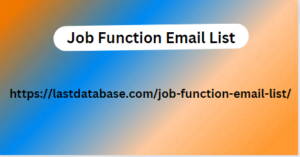Post by account_disabled on Mar 6, 2024 1:02:04 GMT -5
The a large complex business could easily run to hundreds of pages while a small business might just have a small spreadsheet focusing on the main items. There are a few essential items to include in a risk management plan however. rating of each risk based on likelihood and impact an assessment of current controls a plan of action Lets look at each of those in turn. If youve been following the series so far youll notice that we already covered the first two items in the last tutorial. So weve got a good headstart on our plan already. Heres the sample table we put together last time Risk Likelihood Impact Risk Score Key client XYZ Corp is late paying its invoice.Loss of power for more than hours.
Janet leaves the company. A new competitor undercuts the price of our main product. Scathing product review from an Job Function Email List influential magazinewebsite. Your full plan will of course have a lot more items but this example at least illustrates the format. You can refer to the other tutorial for more details about what each score means. So to complete our risk management plan we just need to add two more columns to our table. The first new column is an assessment of current controls. For each of the risks youve identified what are you currently doing to control.

Risk and how effective is it For example lets look at the first item on our table Key client XYZ Corp is late paying its invoice. Maybe you are already controlling for that risk by having automated reminders sent out when the invoice is close to its due date and having one of your staff members responsible for following up personally with phone calls and emails. Youd list those as existing controls on your risk management plan. So the next step is to consider the effectiveness of those actions. How well are things working right.
Janet leaves the company. A new competitor undercuts the price of our main product. Scathing product review from an Job Function Email List influential magazinewebsite. Your full plan will of course have a lot more items but this example at least illustrates the format. You can refer to the other tutorial for more details about what each score means. So to complete our risk management plan we just need to add two more columns to our table. The first new column is an assessment of current controls. For each of the risks youve identified what are you currently doing to control.

Risk and how effective is it For example lets look at the first item on our table Key client XYZ Corp is late paying its invoice. Maybe you are already controlling for that risk by having automated reminders sent out when the invoice is close to its due date and having one of your staff members responsible for following up personally with phone calls and emails. Youd list those as existing controls on your risk management plan. So the next step is to consider the effectiveness of those actions. How well are things working right.
